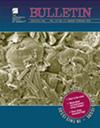中生代-新生代早期中国东南地区的地貌反转事件:受沉积盆地的痕量元素含量、钕同位素地球化学和碎屑锆石U-Pb地质年代学的制约
IF 3.7
1区 地球科学
Q1 GEOSCIENCES, MULTIDISCIPLINARY
引用次数: 0
摘要
在整个中生代和新生代早期,中国东南部的构造和地貌经历了重大变化,这主要是由于亚洲大陆下俯冲的古太平洋板块的板块动力学变化所引起的。我们将中国东南部福建省西部的中生代永安盆地与该地区共生盆地的沉积记录进行了对比研究,以记录中生代永安盆地的碎屑沉积类型及其成因是如何随时间变化的,以及控制这些变化的区域地质过程可能是什么。中侏罗世漳平组样品的平均εNd值为-16.6,其碎屑锆石以1800Ma和2000Ma颗粒为主,来源于武夷山北部。这些山脉在中侏罗世经历了显著的岩石和地表隆起,成为中国东南部碎屑沉积物的主要来源。下白垩统坂头组含火成岩,为河湖相沉积,εNd值为-14.8至-12.4,含有大量160-120Ma的锆石,来源于晚侏罗世花岗岩,此时已广泛出露于中国东南部地表。下白垩统上部和上白垩统下部的沙县地层含有粗粒和分选较差的砂岩-砾岩,以及火山岩和花岗岩碎屑,与坂头地层不整合。沙县地层为河流至冲积扇沉积,其形成标志着古海岸山脉的快速隆升。上白垩统崇安地层(厚度大于2000米)含有丰富的火山岩和花岗岩碎屑岩,是冲积-冲积扇沉积和河流沉积的代表。沙县地层和崇安地层的平均εNd值介于-9.3和-7.5之间,其最丰富的铁锆石年龄介于120Ma和80Ma之间。到晚白垩世末期,古海岸山脉构成了一个近4千米高的岩浆带,中国东南部大部分地区位于其北部海拔较低的雨影带中。台湾始新世-更新世沉积盆地岩石的平均εNd值为-10.9,并含有丰富的新生代碎屑锆石。这些岩石的沉积源是古海岸山脉。台湾中新世基底地层的εNd负值更大(-13.0),含有侏罗纪-白垩纪以及丰富的古近纪和新近纪锆石,表明武夷山在新生代后期又是主要的沉积源。在白垩纪(140-60Ma),华南东南边缘地区的剥蚀速率较高(0.12-0.10 km/年),而同期中国西南部和华南内陆地区的剥蚀速率很低。这些差异证实了直到晚白垩世,中国东南部一直存在沿海高山。在新生代晚期(30-0Ma),华南东部,特别是沿海地区的剥蚀速率很低(0.06-0.02 km/yr),而在南岭北麓带和更靠北内陆的长江地块,剥蚀速率最快(0.14-0.16 km/yr),这表明在新生代晚期,华南西部的地表高程变高,而华南东部的地表高程变低。在中生代和新生代早期,青藏高原的俯冲板块动力学和构造作用推动了中国东南部地貌的多次重大变化。本文章由计算机程序翻译,如有差异,请以英文原文为准。
Landscape inversion episodes in SE China during the Mesozoic−early Cenozoic: Constrained by trace-element contents, Nd isotope geochemistry, and detrital zircon U-Pb geochronology of sedimentary basins
The tectonics and landscape of SE China experienced significant changes throughout the Mesozoic and early Cenozoic, largely in response to variations in the slab dynamics of the paleo-Pacific plate, which was subducting beneath continental Asia. We investigated the Mesozoic Yong’an basin in western Fujian Province of SE China in comparison to the sedimentary records of coeval basins in the region to document how its clastic sediment types and their provenance varied through time during the Mesozoic and what regional geologic processes may have controlled these variations. The average εNd value of samples from the Middle Jurassic Zhangping Formation is −16.6, and its detrital zircons are dominated by 1800 Ma and 2000 Ma grains, sourced from the northern Wuyishan Mountains. These mountains underwent significant rock and surface uplift by the Middle Jurassic and became the main source of clastic sediments in SE China. The Lower Cretaceous Bantou Formation contains pyroclastic rocks and represents fluvial-lacustrine deposits with εNd values of −14.8 to −12.4 and abundant 160−120 Ma detrital zircons, sourced from Late Jurassic granitoid rocks, which were widely exposed at the surface in SE China by this time. The upper Lower and lower Upper Cretaceous Shaxian Formation contains coarse-grained and poorly sorted sandstones-conglomerates with volcanic and granitic rock fragments, and it rests unconformably on the Bantou Formation. The Shaxian Formation represents fluvial- to alluvial-fan deposits, and its formation marks the timing of a rapid uplift of the paleo−Coastal Mountains. The Upper Cretaceous Chong’an Formation (>2000 m thick) contains abundant volcanic and granitic rock clasts and represents alluvial-fan and fluvial deposits. The average εNd values of the Shaxian and Chong’an Formations range between −9.3 and −7.5, and their most abundant detrital zircon ages are between 120 Ma and 80 Ma. By the end of the Late Cretaceous, the paleo−Coastal Mountains constituted a nearly 4-km-high magmatic belt, with much of SE China situated in its rain shadow at a lower elevation to the north. Eocene−Oligocene sedimentary basin rocks in Taiwan have an average εNd value of −10.9 and abundant Phanerozoic detrital zircons. The sediment source for these rocks was the paleo−Coastal Mountains. The Miocene basinal strata in Taiwan have more negative εNd values (−13.0) and contain Jurassic−Cretaceous as well as abundant Paleoproterozoic and Neoproterozoic zircons, indicating that the Wuyishan Mountains were again the main sediment source later in the Cenozoic. Denudation rates in the SE margin of South China were high (0.12−0.10 km/yr) during the Cretaceous (140−60 Ma), while they were very low in SW China and in the interior of South China during the same period. These differences confirm the existence of high coastal mountains in SE China until the Late Cretaceous. Denudation rates in eastern South China, particularly the coastal areas, were very low (0.06−0.02 km/yr) during the late Cenozoic (30−0 Ma), whereas they were the fastest (0.14−0.16 km/yr) in the northern Nanling belt and the Yangtze block farther inland to the north, indicating the surface elevation became higher in the western part of South China but lower in its eastern part in the late Cenozoic. This dynamic landscape evolution of SE China through multiple and major shifts throughout the Mesozoic and early Cenozoic was driven by the subducting slab dynamics and the tectonics of the Tibetan Plateau.
求助全文
通过发布文献求助,成功后即可免费获取论文全文。
去求助
来源期刊

Geological Society of America Bulletin
地学-地球科学综合
CiteScore
9.30
自引率
8.20%
发文量
159
审稿时长
4-8 weeks
期刊介绍:
The GSA Bulletin is the Society''s premier scholarly journal, published continuously since 1890. Its first editor was William John (WJ) McGee, who was responsible for establishing much of its original style and format. Fully refereed, each bimonthly issue includes 16-20 papers focusing on the most definitive, timely, and classic-style research in all earth-science disciplines. The Bulletin welcomes most contributions that are data-rich, mature studies of broad interest (i.e., of interest to more than one sub-discipline of earth science) and of lasting, archival quality. These include (but are not limited to) studies related to tectonics, structural geology, geochemistry, geophysics, hydrogeology, marine geology, paleoclimatology, planetary geology, quaternary geology/geomorphology, sedimentary geology, stratigraphy, and volcanology. The journal is committed to further developing both the scope of its content and its international profile so that it publishes the most current earth science research that will be of wide interest to geoscientists.
 求助内容:
求助内容: 应助结果提醒方式:
应助结果提醒方式:


